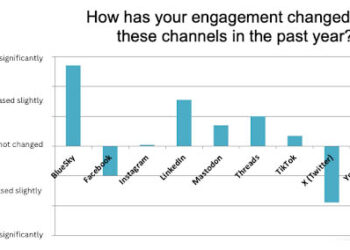We’ve all been amazed at the interactivity of print.
What?!
Yes.
The New Yorker Cartoon Caption Contest. Need I say more?
Well, yes, I do. Or, more interestingly, I can.
Take This Old House, a magazine derivative from the PBS show of the same name (with a nice 2.0 site, by the way). Its latest issue has been rechristened Your Old House, and consists of cover art voted to the cover by readers, tips from readers, and the like. As Sam Husni observes, editors become curators, not creators, in this role.
Consider the success of user-generated content providing the entire contents of JPG and Everywhere magazines, which I blogged about recently.
Now, consider STM publishing. Haven’t the editors in STM always been curators? User-generated content is the traditional type for journals. Selection, prioritization, and refinement of the best is an editor’s role.
But new opportunities arise with print and interactivity (hence the pained neologism “printeractivity” I attempted in the headline), from online quizzes that print the results to contests like the New Yorker’s, the Internet has made it so that submission of multimedia and traditional text is swift and reliable. And it can be repurposed to support print publishing.
Print interactivity has been with us since the first letter to the editor was printed. Now, it’s faster and more robust. Paper is viable option still, but given the digital reference point that has us looking back upon it, paper looks different. It has changed. It is an option, another tool, not the goal.
Interactivity on the printed page has long been a part of publishing, and given our new vantage point, we should figure out how to use it anew.


